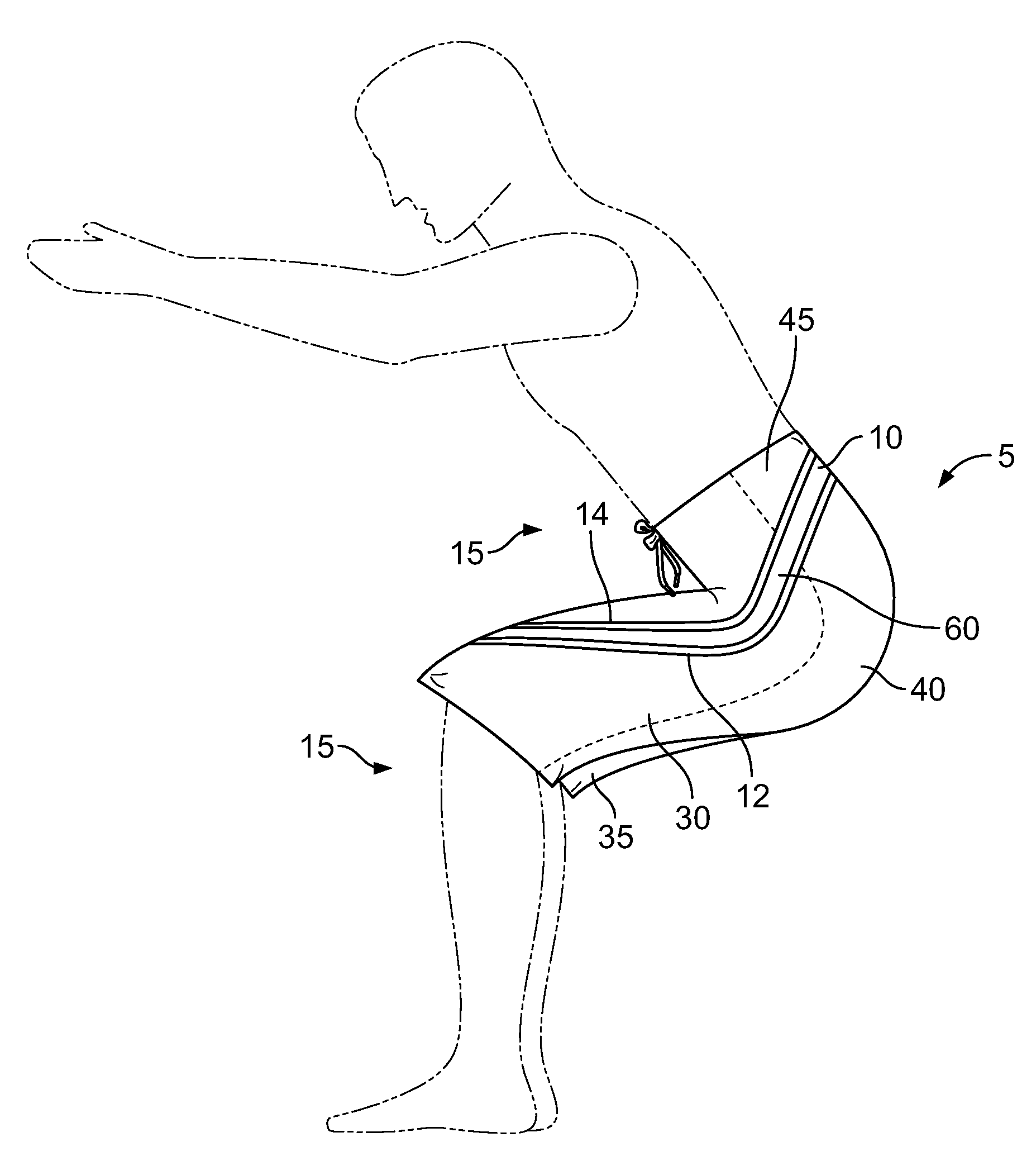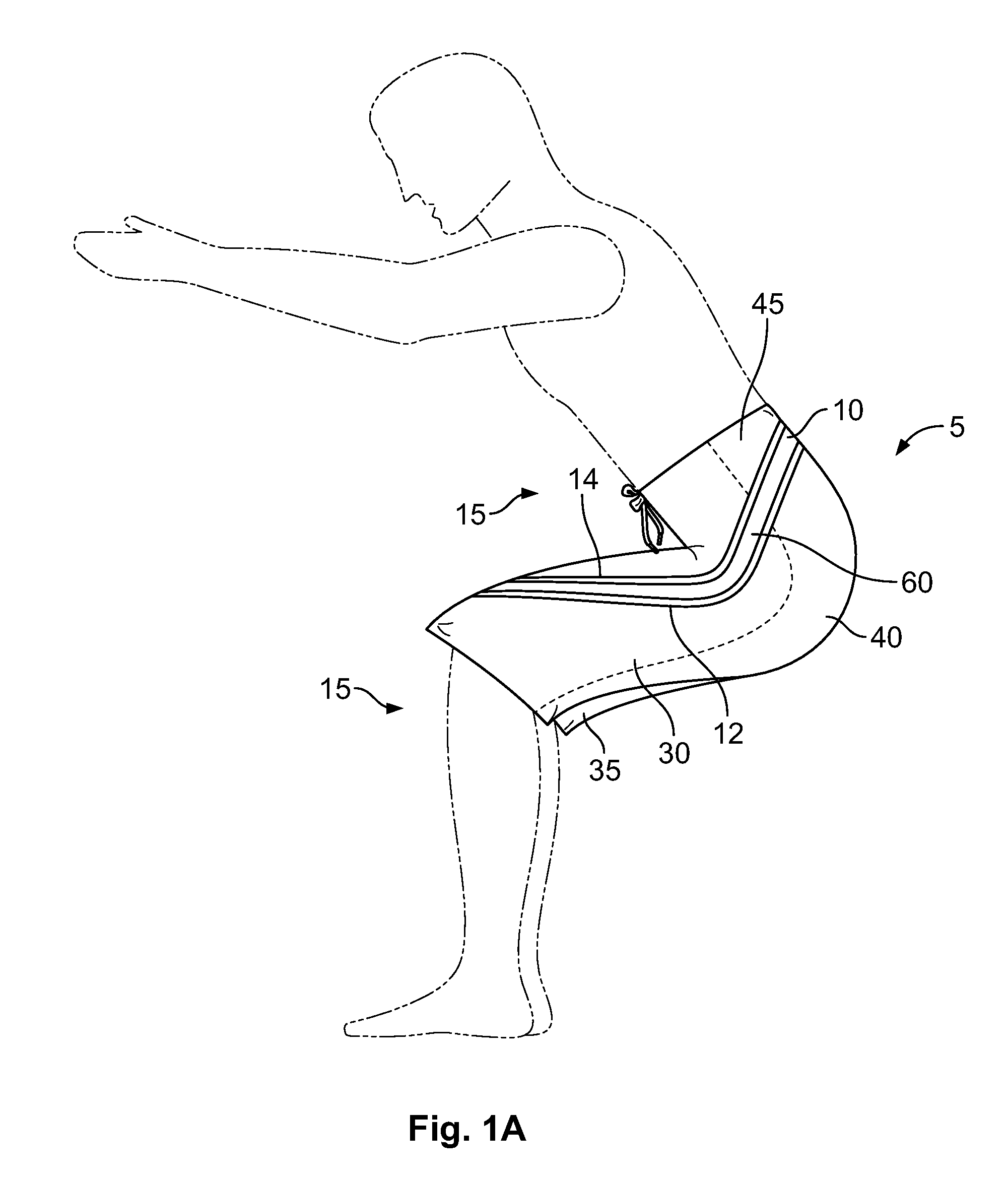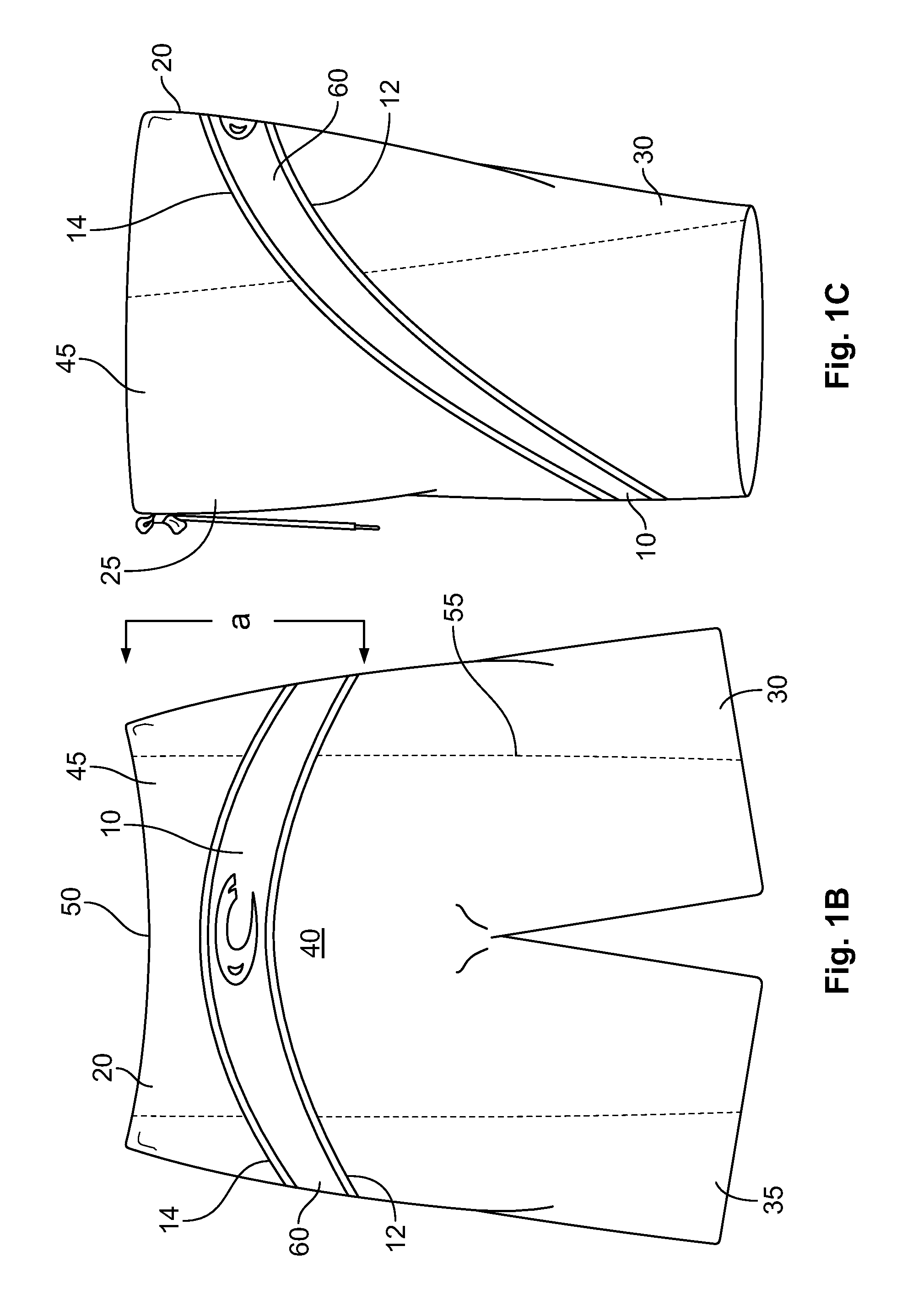Garment with stretchable section and related methods
a technology of stretchable sections and garments, applied in the field of garments, can solve the problems of restricting the degree of movement of wearers, affecting athletic/physical performance and/or enjoyment, and affecting the wearer's comfort, etc., to achieve the effect of improving wearability, facilitating garment expansion, and improving wearability
- Summary
- Abstract
- Description
- Claims
- Application Information
AI Technical Summary
Benefits of technology
Problems solved by technology
Method used
Image
Examples
Embodiment Construction
[0028]As illustrated in FIGS. 1A-E, a preferred embodiment of the invention includes a garment 5 having a stretchable section 10 forming an integral portion of the garment. The stretchable section preferably is fabricated from a stretchable material, such as elastomeric foam, spandex, LYCRA®, neoprene or a neoprene-type material known as “ultra-flex”, or a similar type of material. For board shorts, the stretchable material is preferably stretchable neoprene having sufficient elasticity to allow the repeated stretching described herein during the wearer's various body movements and to return to its original unstretched condition.
[0029]Also preferably, the remaining portions of the garment 5 are fabricated from any suitable relatively less-stretchable or non-stretchable materials, such as a polyester blend or the like. Other materials include, without limitation, cotton, polyester, nylon, or blends thereof. Although the preferred embodiment includes a relatively more stretchable sect...
PUM
 Login to View More
Login to View More Abstract
Description
Claims
Application Information
 Login to View More
Login to View More - R&D
- Intellectual Property
- Life Sciences
- Materials
- Tech Scout
- Unparalleled Data Quality
- Higher Quality Content
- 60% Fewer Hallucinations
Browse by: Latest US Patents, China's latest patents, Technical Efficacy Thesaurus, Application Domain, Technology Topic, Popular Technical Reports.
© 2025 PatSnap. All rights reserved.Legal|Privacy policy|Modern Slavery Act Transparency Statement|Sitemap|About US| Contact US: help@patsnap.com



